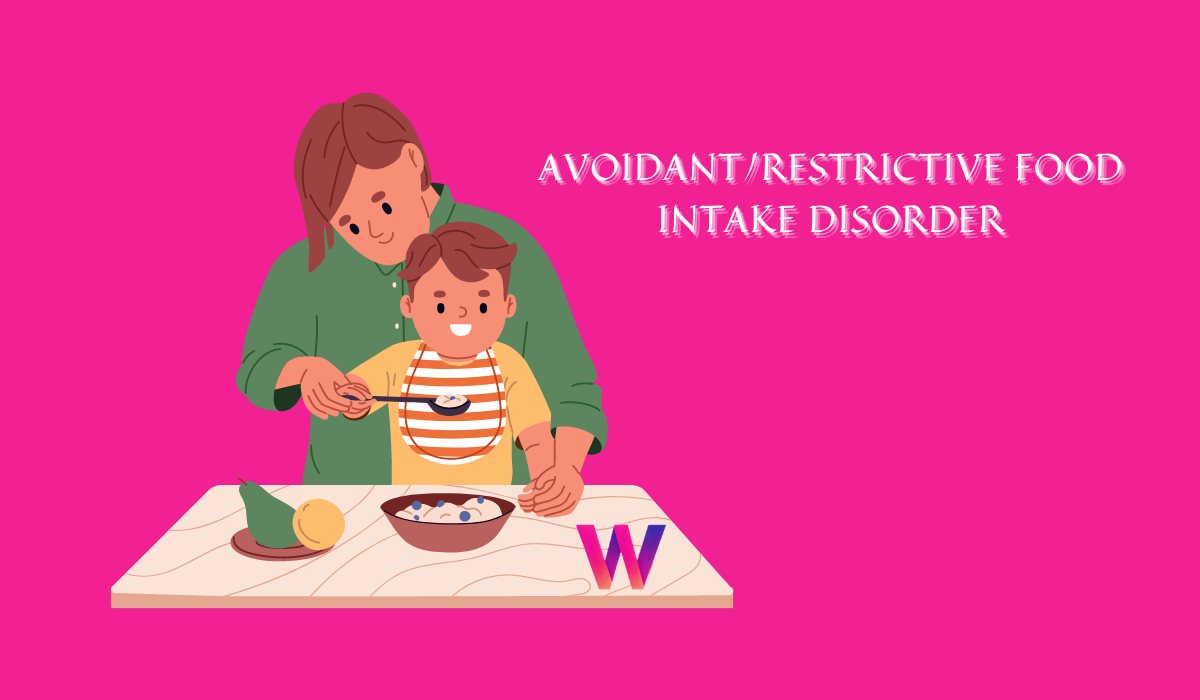As parents, we want our children to grow and thrive, both physically and mentally. However, when it comes to feeding our little ones, we often face challenges, especially if our child is a picky eater. While picky eating is a common phase in a child’s development, some children may experience a more severe form of selective eating known as Avoidant/Restrictive Food Intake Disorder (ARFID).
What is ARFID?
https://waystocure.com/delicious-and-nutritious-breakfast-ideas-for-summer/ARFID is a relatively new diagnosis that falls under the umbrella of feeding disorders. It is characterized by the persistent avoidance or restriction of certain foods or food groups, leading to inadequate nutrition and impaired growth and development. Unlike picky eating, which is typically a temporary phase, ARFID is a more serious condition that can have long-term consequences if not addressed.
Children with ARFID may have an extreme aversion to certain textures, smells, or tastes, making it challenging for them to consume a varied and balanced diet. They may have a limited range of preferred foods and may refuse to try new foods altogether. This can result in nutritional deficiencies and hinder their overall growth and development.
Overcoming Picky Eating
Picky eating is a common behavior among children, and most of them eventually outgrow it. However, as parents, there are several strategies we can employ to help our children overcome picky eating habits and develop a healthy relationship with food.
1. Create a Positive Eating Environment
Creating a positive eating environment is crucial in encouraging your child to try new foods. Make mealtimes enjoyable by sitting together as a family, engaging in pleasant conversation, and avoiding distractions such as screens or toys. This will help your child associate mealtime with positive experiences and reduce anxiety around trying new foods.
2. Offer a Variety of Foods
Expose your child to a wide range of foods from an early age. Offer them a variety of fruits, vegetables, proteins, and grains, and encourage them to try at least a bite of each. Be patient and persistent, as it may take several attempts before your child accepts a new food. Remember, it’s normal for children to be skeptical of new flavors and textures.
3. Involve Your Child in Meal Preparation
Getting your child involved in meal preparation can increase their interest in trying new foods. Take them grocery shopping and let them choose a new fruit or vegetable to try. In the kitchen, allow them to assist with age-appropriate tasks, such as washing vegetables or stirring ingredients. This hands-on approach can make mealtime more exciting and encourage your child to explore new flavors.
4. Be a Role Model
Children often imitate their parents’ behaviors, so it’s essential to be a positive role model when it comes to eating. Show enthusiasm for trying new foods and demonstrate a balanced approach to eating. Avoid making negative comments about certain foods, as this can influence your child’s perception and willingness to try them.
5. Make Mealtime Fun
Make mealtime a fun and interactive experience for your child. Use colorful plates and utensils, arrange food in creative shapes, or create themed meals. Incorporate games or challenges, such as “eating the rainbow” by trying foods of different colors. By making mealtime enjoyable, you can help your child develop a positive association with food.
Understanding ARFID
While picky eating is a common behavior, ARFID is a more severe condition that requires professional intervention. Understanding the signs and symptoms of ARFID can help parents identify if their child may be struggling with this disorder.
1. Extreme Food Selectivity
Children with ARFID may have an extremely limited range of preferred foods and may avoid entire food groups. They may have strong aversions to specific textures, smells, or tastes, making it challenging for them to consume a balanced diet.
2. Fear or Anxiety Surrounding Food
Children with ARFID often experience fear or anxiety surrounding food. They may exhibit signs of distress when presented with new or unfamiliar foods and may refuse to eat them altogether. This fear can be rooted in a past negative experience or may be unrelated to any specific event.
3. Nutritional Deficiencies and Impaired Growth
ARFID can lead to significant nutritional deficiencies, as children with this disorder often have limited food choices. This can result in inadequate intake of essential nutrients, leading to impaired growth and development. It is essential to address these deficiencies and ensure the child’s nutritional needs are met.
4. Avoidance of Social Situations Involving Food
Children with ARFID may actively avoid social situations involving food. They may decline invitations to birthday parties or family gatherings where food is involved, as they feel uncomfortable or anxious about the food options available. This avoidance can impact their social interactions and overall quality of life.
Overcoming ARFID
Overcoming ARFID requires a comprehensive approach involving a multidisciplinary team, including healthcare professionals, therapists, and dietitians. The following strategies can help parents support their child in overcoming ARFID:
1. Seek Professional Help
If you suspect that your child may have ARFID, it is essential to seek professional help. Consult with your child’s pediatrician, who can refer you to specialists experienced in treating feeding disorders. These specialists can conduct a thorough evaluation and develop an individualized treatment plan for your child.
2. Food Exposure Therapy
Food exposure therapy is a common treatment approach for ARFID. It involves gradually introducing new and challenging foods in a structured and supportive environment. This therapy aims to desensitize the child to their aversions and expand their accepted food repertoire.
3. Cognitive-Behavioral Therapy
Cognitive-behavioral therapy (CBT) can help children with ARFID address their fears and anxieties surrounding food. Through CBT, children learn coping mechanisms and strategies to manage their anxiety, allowing them to approach new foods with a more positive mindset.
4. Nutritional Supplementation
In cases where nutritional deficiencies are present, nutritional supplementation may be necessary. A registered dietitian can assess your child’s nutritional needs and recommend appropriate supplements to ensure they receive adequate nutrients while working on expanding their food repertoire.
5. Family Support and Education
ARFID can be challenging for the entire family. It is essential to seek support and education to better understand the disorder and learn effective strategies to support your child. Support groups, counseling, and educational resources can provide valuable guidance and reassurance during the treatment process.
FAQs
Q: Is picky eating a sign of ARFID?
A: Picky eating is a common behavior among children and is typically a temporary phase. However, if your child’s selective eating habits are severe, persistent, and impacting their growth and development, it may be a sign of ARFID. Consulting with a healthcare professional can help determine the underlying cause.
Q: Can ARFID be outgrown?
A: With appropriate intervention and support, many children with ARFID can overcome their selective eating habits and develop a healthier relationship with food. Early identification and treatment increase the chances of successful outcomes.
Q: Can ARFID lead to long-term health issues?
A: ARFID can lead to long-term health issues if left untreated. Nutritional deficiencies resulting from limited food choices can impact growth, development, and overall health. It is crucial to address ARFID and ensure the child’s nutritional needs are met.
Conclusion
Understanding ARFID and picky eating is essential for parents to provide the necessary support to their children. While picky eating is a common phase that most children outgrow, ARFID requires professional intervention and a comprehensive treatment approach. By creating a positive eating environment, offering a variety of foods, and involving your child in meal preparation, you can help them overcome picky eating habits. For children with ARFID, seeking professional help, such as food exposure therapy and cognitive-behavioral therapy, is crucial for their long-term well-being. Remember, with patience, support, and the right resources, you can help your child thrive and develop a healthy relationship with food.

